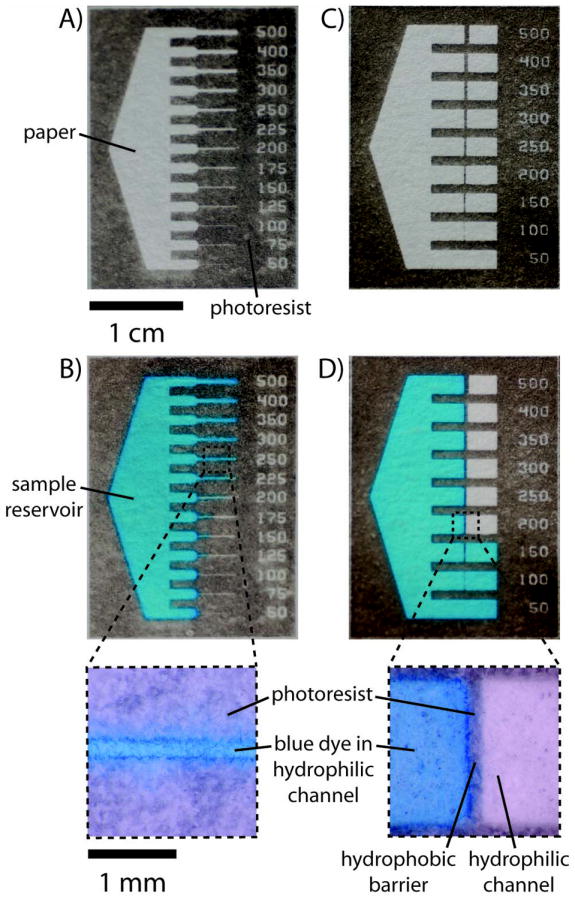Fig. 2.

(A) A μPAD made from Whatman Chromatography paper No. 1 designed to measure the smallest functional hydrophilic channel. A large sample reservoir leads into a series of channels of decreasing widths (from 500 μm to 50 μm). (B) The device shown in (A) after adding 40 μL of 1 mM Erioglaucine in water to the sample reservoir. The aqueous dye filled the channels as small as 250 μm in width for chromatography paper. (C) A μPAD designed to measure the smallest functional hydrophobic barrier. A large sample reservoir leads into a series of channels that contain hydrophobic barriers of decreasing widths (from 500 μm to 50 μm). (D) The device shown in (C) after adding 40 μL of 1 mM Erioglaucine. The aqueous dye crossed the barriers that were less than 200 μm in width.
